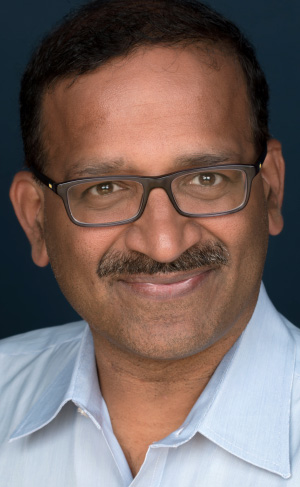/ Featured Blogs
WiFi QoE Assurance with TR-069 - Part 1: The Toolbox
 Subscribers today expect to be connected at all times with exceptional service quality. For communication service providers operating in urban environments, multi-dwelling units (MDUs) are a big cause for concern. Delivering consistently high WiFi service quality in high-density environments is a challenge. The sheer number of nearby access points, electronics, and outside influences can result in a host of WiFi service quality issues... more
Subscribers today expect to be connected at all times with exceptional service quality. For communication service providers operating in urban environments, multi-dwelling units (MDUs) are a big cause for concern. Delivering consistently high WiFi service quality in high-density environments is a challenge. The sheer number of nearby access points, electronics, and outside influences can result in a host of WiFi service quality issues... more
- By Maik Hassel
- Comments: 0
- Views: 5,285
Many .COM Domain Names with Same Keywords as Premium New gTLDs are Available for Registration
 Earlier this month, Andrew Allemann wrote a post on notable NameJet sales in which he discusses the sale of PropertyRehab.com for $2,400 as "a perfect example of how wrong some domain registries are on their premium pricing." He mentions that the registry operator for the .rehab new generic top-level domain (new gTLD), has marked property.rehab as a platinum domain name and asks: "Why would someone pay thousands (or tens of thousands) a year for Property.rehab when they could buy PropertyRehab.com for just $2,400?" more
Earlier this month, Andrew Allemann wrote a post on notable NameJet sales in which he discusses the sale of PropertyRehab.com for $2,400 as "a perfect example of how wrong some domain registries are on their premium pricing." He mentions that the registry operator for the .rehab new generic top-level domain (new gTLD), has marked property.rehab as a platinum domain name and asks: "Why would someone pay thousands (or tens of thousands) a year for Property.rehab when they could buy PropertyRehab.com for just $2,400?" more
- By Jeannie McPherson
- Comments: 3
- Views: 6,944
Astronomical Increases in Domain Names: Low Constancy of Abusive Registrations
 When ICANN implemented the Uniform Domain Name Dispute Resolution Policy (UDRP) in 1999, the number of registered domain names were in the low eight digits. Registered domain names passed the first million in 1997. Today, they are in the first third of nine digits, and continuing to grow. In its newly released publication gTLD Marketplace Health Index (Beta) (July 21, 2016) ICANN offers through a couple dozen metrics a picture of the multiple parts that corporately go into making a healthy marketplace. It's "Beta" because the Health Index is a work in progress. more
When ICANN implemented the Uniform Domain Name Dispute Resolution Policy (UDRP) in 1999, the number of registered domain names were in the low eight digits. Registered domain names passed the first million in 1997. Today, they are in the first third of nine digits, and continuing to grow. In its newly released publication gTLD Marketplace Health Index (Beta) (July 21, 2016) ICANN offers through a couple dozen metrics a picture of the multiple parts that corporately go into making a healthy marketplace. It's "Beta" because the Health Index is a work in progress. more
- By Gerald M. Levine
- Comments: 0
- Views: 8,837
Hyperconvergence, Disaggregation, and Cloud: The Foggy Future of Network Engineering
 The world of networking tends to be bistable: we either centralize everything, or we decentralize everything. We started with mainframes, passed through Lotus 123 hidden in corners, then to mini's and middleware, then to laptops, and now to the cloud, to be followed by fog. This particular cycle of centralization/decentralization, however, has produced a series of overlapping changes that are difficult to decipher. You can somehow hear someone arguing about disaggregation and hyperconvergence through the fog -- but just barely. more
The world of networking tends to be bistable: we either centralize everything, or we decentralize everything. We started with mainframes, passed through Lotus 123 hidden in corners, then to mini's and middleware, then to laptops, and now to the cloud, to be followed by fog. This particular cycle of centralization/decentralization, however, has produced a series of overlapping changes that are difficult to decipher. You can somehow hear someone arguing about disaggregation and hyperconvergence through the fog -- but just barely. more
- By Russ White
- Comments: 0
- Views: 9,130
It’s Auction Time Again
 This week ICANN will auction off .WEB or .WEBS. There are seven live applications for .WEB and one for .WEBS. The string contention process decided that the two names are so similar that they'll only assign one of them, so all eight applications are in one auction... There are some deep pocketed bidders in this round including Google, Donuts, web.com which owns Network Solutions and a lot of other web properties, and Schlund which owns the largest web hoster 1&1. more
This week ICANN will auction off .WEB or .WEBS. There are seven live applications for .WEB and one for .WEBS. The string contention process decided that the two names are so similar that they'll only assign one of them, so all eight applications are in one auction... There are some deep pocketed bidders in this round including Google, Donuts, web.com which owns Network Solutions and a lot of other web properties, and Schlund which owns the largest web hoster 1&1. more
- By John Levine
- Comments: 0
- Views: 6,632
The Next Development in Wireless Broadband
 In the USA the FCC has started the discussion on the next level of telecoms in the wireless market, aimed at making spectrum in bands above 24GHz available for flexible-use of wireless services, including next-generation, or 5G networks and technologies. New technologies such as massive-MIMO are going to make it possible to deliver 'fibre-like' speeds over short distance wireless networks operating in the 24+GHz bands. This will make the technology especially useful for high-speed broadband services in densely populated areas. more
In the USA the FCC has started the discussion on the next level of telecoms in the wireless market, aimed at making spectrum in bands above 24GHz available for flexible-use of wireless services, including next-generation, or 5G networks and technologies. New technologies such as massive-MIMO are going to make it possible to deliver 'fibre-like' speeds over short distance wireless networks operating in the 24+GHz bands. This will make the technology especially useful for high-speed broadband services in densely populated areas. more
- By Paul Budde
- Comments: 0
- Views: 8,034
‘Pokemon’ Domain Names are a No-Go
 The legal issues surrounding the sudden success of "Pokemon Go" -- one of the world's fastest-growing apps or games -- are popping up as quickly as unhatched Eggs at a PokéStop. Within days of the game's release, the National Safety Council issued a call that "urges pedestrians to exercise caution while playing the Pokémon Go augmented reality game" and "implores drivers to refrain from playing the game behind the wheel." more
The legal issues surrounding the sudden success of "Pokemon Go" -- one of the world's fastest-growing apps or games -- are popping up as quickly as unhatched Eggs at a PokéStop. Within days of the game's release, the National Safety Council issued a call that "urges pedestrians to exercise caution while playing the Pokémon Go augmented reality game" and "implores drivers to refrain from playing the game behind the wheel." more
- By Doug Isenberg
- Comments: 0
- Views: 11,482
Developing Internet of Things Building Blocks

The Internet is undergoing an evolutionary transformation resulting from the explosive growth of things that are interconnected. From single purpose sensors through wearable technologies to sophisticated computing devices, we are creating, exchanging, and consuming more data at rates that would have been inconceivable just a decade ago. The market suggests the average consumer believes this is the best world possible. As technologists, we have a responsibility to consider if we are building an Internet that is in the best interest of the user. more
- By Ram Mohan
- Comments: 1
- Views: 17,297
Fibre Optic Technologies for the Next 50 Years
 It might be hard to imagine but we were already talking about fibre to the home networks back in the 1970s and 1980s. This was in the early days of interactive TV and pay TV and fibre optics were already at that time seen as the next level of telecoms infrastructure needed for such services. The first residential fibre pilot networks were built in Berlin and Nagasaki. One of the most ambitious projects was in Columbus Ohio, but in the end they decided to continue with their HFC network. more
It might be hard to imagine but we were already talking about fibre to the home networks back in the 1970s and 1980s. This was in the early days of interactive TV and pay TV and fibre optics were already at that time seen as the next level of telecoms infrastructure needed for such services. The first residential fibre pilot networks were built in Berlin and Nagasaki. One of the most ambitious projects was in Columbus Ohio, but in the end they decided to continue with their HFC network. more
- By Paul Budde
- Comments: 0
- Views: 7,513
NTIA Revs up Rhetoric as IANA Transition Looms
 It's been almost six weeks since the NTIA announced "that the proposal developed by the global Internet multistakeholder community meets the criteria NTIA outlined in March 2014 when it stated its intent to transition the U.S. Government's stewardship role for the Internet domain name system (DNS) technical functions, known as the Internet Assigned Numbers Authority (IANA) functions", and thereby signaled the start of the last lap of the IANA transition marathon. more
It's been almost six weeks since the NTIA announced "that the proposal developed by the global Internet multistakeholder community meets the criteria NTIA outlined in March 2014 when it stated its intent to transition the U.S. Government's stewardship role for the Internet domain name system (DNS) technical functions, known as the Internet Assigned Numbers Authority (IANA) functions", and thereby signaled the start of the last lap of the IANA transition marathon. more
- By Philip S. Corwin
- Comments: 1
- Views: 8,129